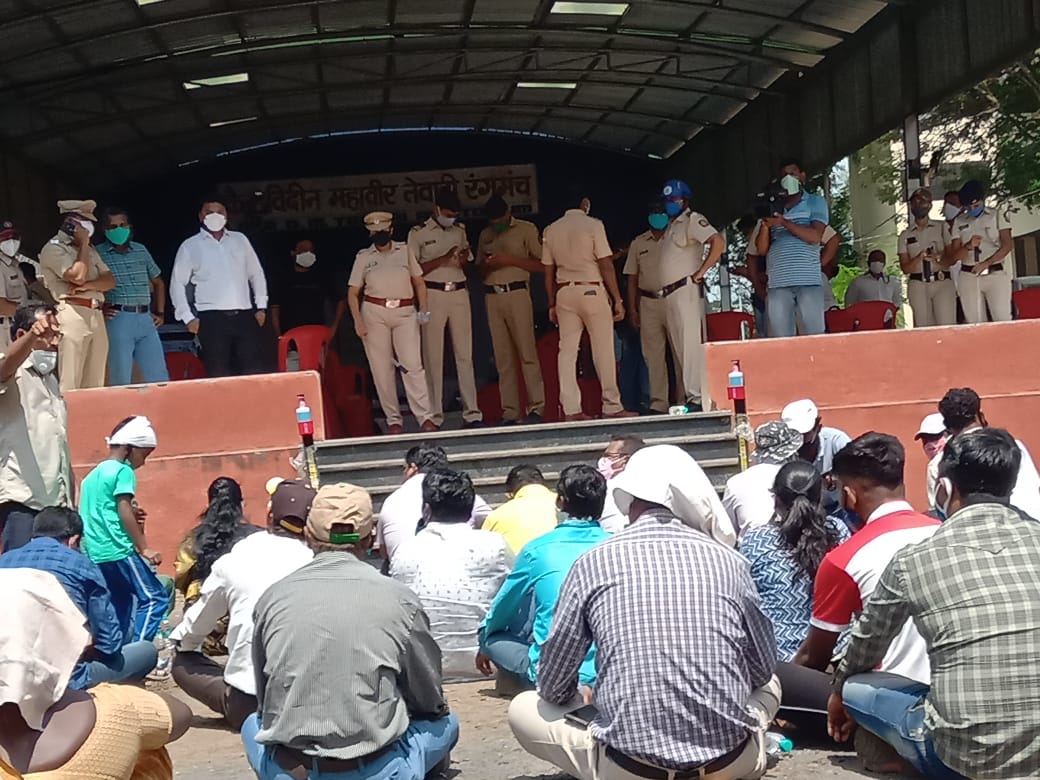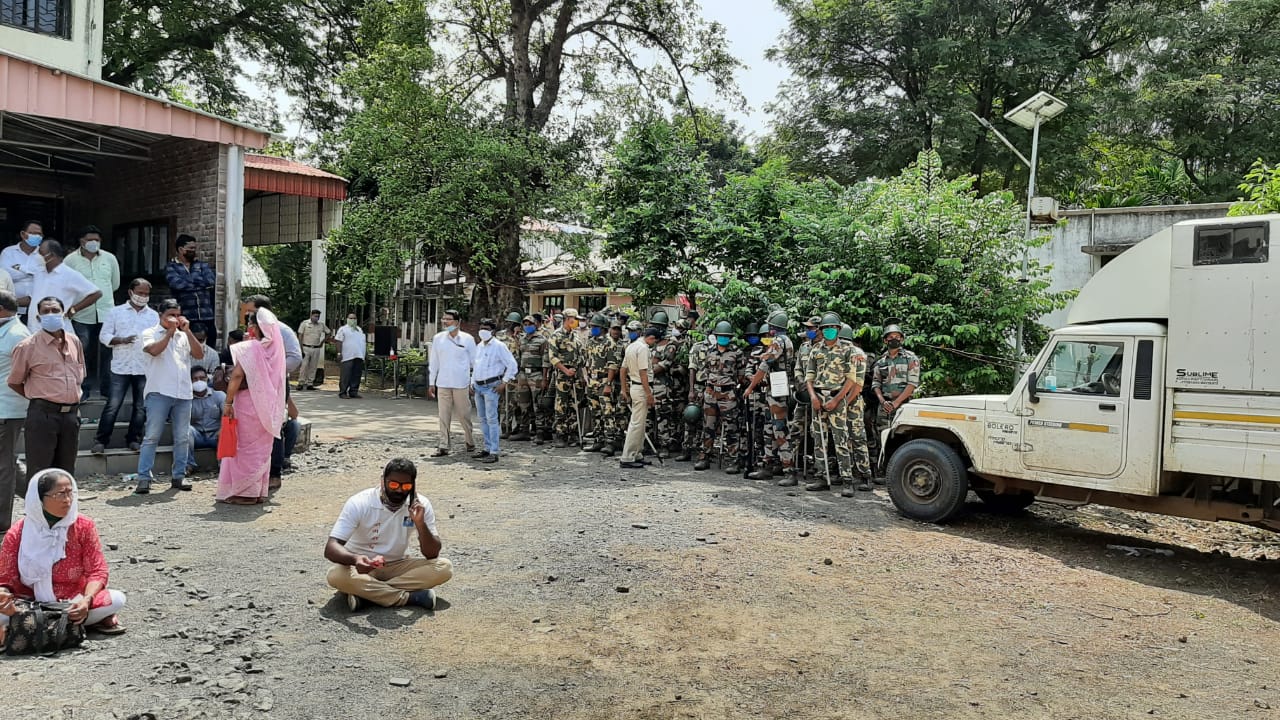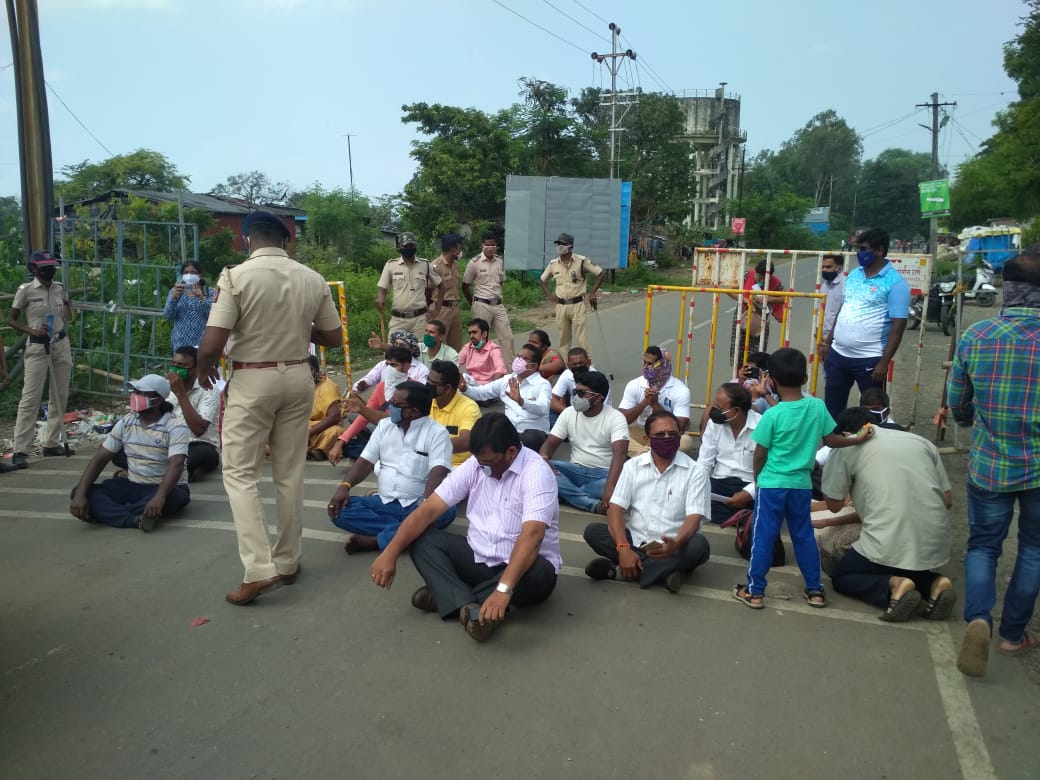Coastal Concern: Maharashtra villagers protest public hearings during COVID19
Local communities in coastal Palghar and Sindhudurg districts in Maharashtra had wanted the public hearings for coastal zone maps to be held after the COVID-19 pandemic ended. But, they have been completed.


The online public hearings were opposed by the affected coastal communities of the state. Photo: Akshay Meher
Despite the tremendous swell of protests in Palghar and Sindhudurg districts in Maharashtra against the public hearings for draft coastal zone management plans during COVID-19 times, the collectors of the coastal districts declared these public hearings had been completed. The Maharashtra government on September 30 said the public consultation process had been completed following consecutive hearings on September 28, 29 and 30.
These hearings are an important step before the government takes forward the finalisation of the state Coastal Zone Management Plan (CZMP). These maps are essential for applicants to decide where to set their coastal projects in, and for the authorities to evaluate their possible impact on local communities and the environment. Public hearings are the only platform that offer deliberative discussion and involvement of the government and people on plans that will shape the future of coastal development.
With the completion of these two public hearings, the state government has completed public hearings in all the seven coastal districts of the state. The public hearings for Mumbai City, Mumbai Suburban, Thane, Raigad and Ratnagiri districts were held in March before the COVID-19 lockdown was announced. The inputs of these hearings will be used to finalise the state’s Coastal Zone Management Plan, which regulates the industrial, infrastructural projects and urbanisation along the coastal areas of the state.
As of October 7, Palghar district has nearly 38,500 COVID-19 cases and over 900 deaths. Sindhudurg district on the other hand, has close to 4,300 COVID-19 cases and nearly 110 deaths. Questions are being raised as to why the consultations were held at a time when Maharashtra continues to add the maximum numbers to the country’s COVID-19 count, every single day.
As per the 2010 Marine Fisheries Census, Maharashtra has 386,259 fisherfolk. Palghar district, comprising 64 coastal villages across four talukas, has about 104,609 fisherfolk. Maharashtra’s largest fishing village and the fish landing centre Satpati is also in Palghar. Sindhudurg district, with 83 villages across five talukas, has a population of 33,178.
The district collectors of Sindhudurg and Palghar, on August 28 and 30, respectively, had announced the online hearings would be held on September 28 and 30 respectively following directions from the director, environment department, and the general secretary of the Maharashtra Coastal Zone Management Authority.
These online public hearings were opposed by the affected coastal communities of the district. They demanded that the physical public hearings be held after the pandemic ends. However, despite several requests and opposition, the public hearings were held as scheduled.

The hearings at Sindhudurg
On September 25, it was announced on the website of the Sindhudurg collectorate that on September 28, along with online public hearing, the persons concerned could also come to the district collector’s office and panchayat samiti offices of Kudal, Malvan, Devgad, Vengurla and Savantwadi to participate in the public hearings. Online public hearing and physical public hearings took place simultaneously. Technical failure marred the first hearing.
The hearings were finally completed on September 30, but not without some tense moments. On the evenings of September 28 and 29, the district collector announced the second and third hearings the next day at two venues each.
“The public hearing was declared as completed, and the haste to do so was not explained,” said Dilip Ghare, member, Maharashtra Machchimar Kruti Samiti and secretary of Sindhudurg Shramajivi Rapan Machchimar Sangh, Malvan. He said that people were struggling to make ends meet post the lockdown. “When held in such a situation, the hearings will automatically be held without the presence of people concerned with the issue. The government has also made no effort to publicise the maps enough,” he added.

The hearing at Palghar
On September 30, the Palghar public hearing was held amid protests. The protestors also blocked the entry as the collector said that only 100 persons would be allowed to enter the venue at a time and barricades were placed. Finally, the police assured people that all those willing to participate would be allowed to reach the venue.
Meanwhile, the petition to challenge the procedure of conducting the public hearing filed by the National Fishworkers Forum and four other organisations, which was pending at the Bombay High Court was also heard. It did not go in favour of the petitioners. “The Court did not reflect on the fact that only a limited number of people were allowed to participate in the physical public hearing, that the corrigendum was issued only two days before the scheduled date of hearing,” said Meenaz Kakalia, advocate for the petitioners.
During the public hearing, the community members demanded answers from the collector on whether the maps have taken into account reports of sea level rise and the impact on the community, whether site visits were conducted and how many community members were contacted for field surveys. The collector said the public hearing was organised only to record suggestions and objections, and not to provide answers. The hearing was declared as completed.
The general secretary, Maharashtra Coastal Zone Management Authority, also director, state environment department, said representatives of the mapping agency could not attend the hearings since they were found to be COVID19 positive and were in quarantine.

The fishing community’s fears
In 2019, the Union environment ministry’s National Centre for Sustainable Coastal Management prepared the Draft Coastal Zone Management Plan maps based on the Coastal Regulation Zone (CRZ) 2019 norms, for all seven coastal districts in Maharashtra. These were published on January 22 this year and used colour codes to demarcate areas.
The protesting communities fear that maps prepared without fair and democratic public consultations, improper demarcation of ecologically sensitive areas and without proper field surveys by local bodies and communities would lead to faulty maps being approved and used as base maps for granting CRZ recommendations for industrial and infrastructural projects.
If faulty maps are approved, the draft Coastal Zone Management Plans would severely impact the coastal communities at large. This can cause harmful and irreversible impacts on the ecologically sensitive and vulnerable coastal areas and the communities. The coastal communities would further be pushed towards an uncertain future in terms of livelihood.
“We access our homes and the sea without the need of any maps, then why are these maps important? If the government needs to map these areas, they should first hold dialogues with us and conduct site visits. We will show them around,” said Umesh Tandel, a fisherman from Tembi village in Mahim, Palghar. “We are the real stakeholders and the ones who would be affected by these maps,” he added.
Several villages along Maharashtra’s coastline already face the brunt of rising sea levels. Satpati in Palghar is one of the several villages that gets flooded during monsoon high tides. Some families also have had to move from their houses along the coast.
The coastline of Palghar is also prone to erosion as seen in the Shoreline Change Atlas of Indian Coast, Volume 2 – Maharashtra and Goa report. The government had to undertake anti-erosion measures and construct seawalls. Such areas need attention and mapping in a democratic manner rather than a top-down approach.
Public hearings are an important platform where important projects and policies can be deliberated upon in a democratic manner. The Government should ensure these public hearings are not held just to tick off boxes, but to ensure meaningful participation of all coastal communities. After all, they are the first in the line of water when there’s any activity on the coast. The wounds of Cyclone Nisarga in June this year are still fresh in their minds.
(With inputs from Kanchi Kohli. The views are of the author)

